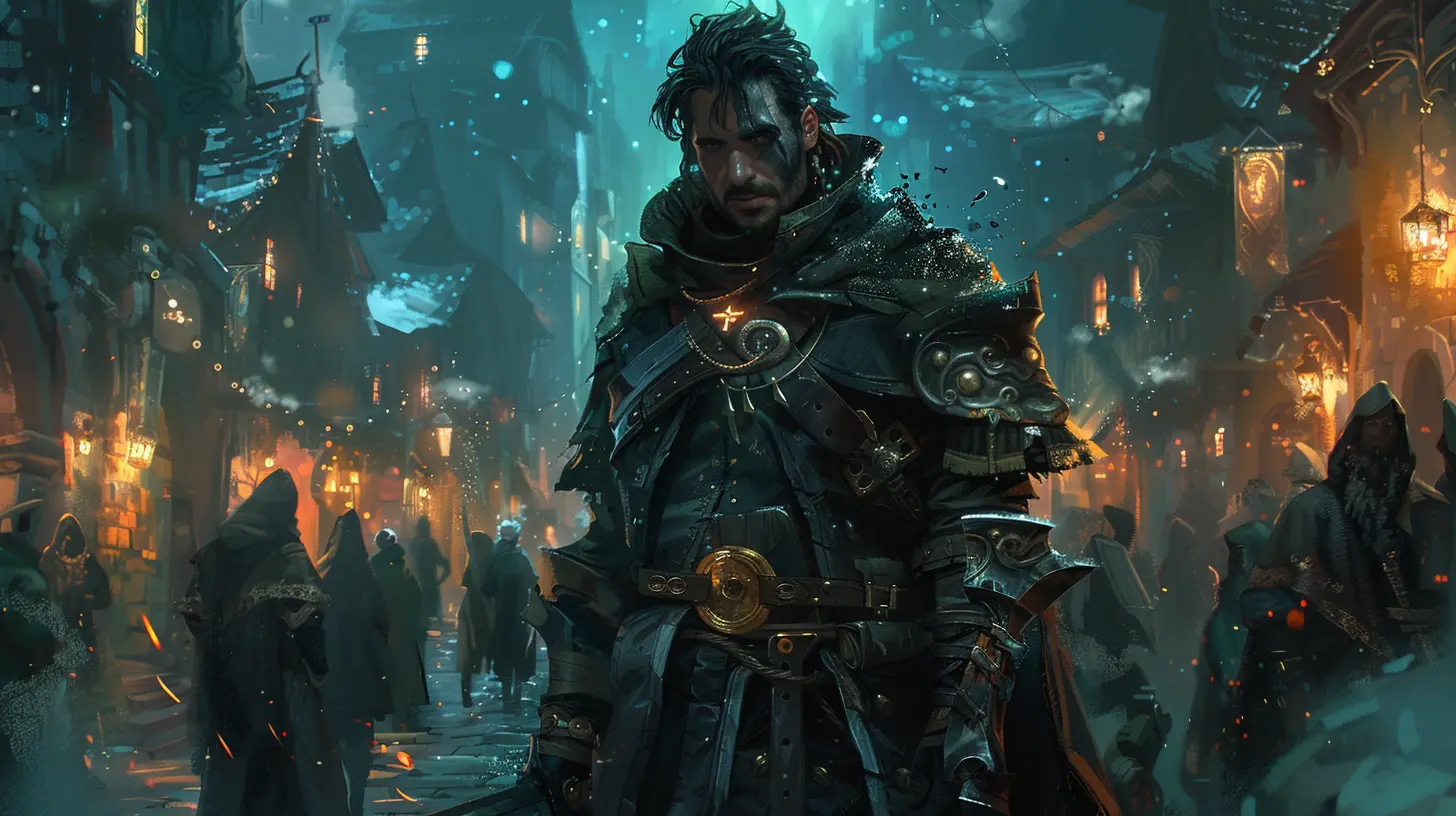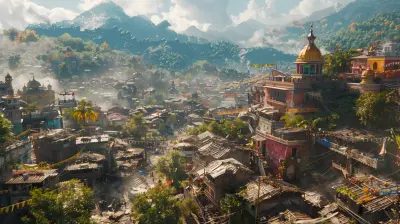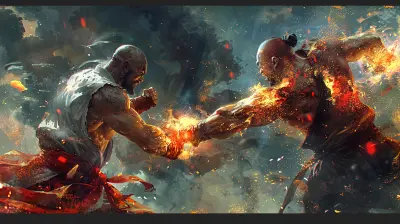The Role of Crafting: How Item Creation Enhances RPG Worlds
31 July 2025
Crafting in RPGs is like the secret sauce that gives the genre its rich, irresistible flavor. You’ve got the sprawling worlds, epic quests, fearsome monsters, and, of course, the satisfying swoosh of leveling up. But let’s be real for a second—what’s the one thing that makes your adventure feel truly personal? Crafting! Whether you’re forging legendary swords, brewing mystical potions, or cobbling together some shabby leather boots, item creation plays a massive role in making RPGs immersive and engaging. It’s not just about making stuff; it’s about building a deeper connection with the world around you.
In this article, we’ll break down why crafting is more than just clicking buttons in a menu. We’ll explore how it adds depth, encourages exploration, and even reflects our own desire for creativity. So grab your hammer, mix those herbs, and let’s dive into the magical world of crafting in RPGs!
What Is Crafting in RPGs?
First thing’s first—what are we even talking about here? Crafting in RPGs (Role-Playing Games) is the process of creating or improving items by using materials found, bought, or looted during your adventures. This could range from forging weapons and armor to brewing potions, cooking meals, or even crafting spells (yes, that’s a thing in some games).Think of it as a mini-game within the game—a little slice of DIY heaven amidst all the dungeon-crawling chaos. While it might sound like a side activity, crafting is often woven into the very fabric of the game’s world and mechanics. It’s not just a diversion; it’s a vital part of the experience.
How Crafting Enhances RPG Worlds
Now that we know what crafting is, let’s talk about why it’s so important. Crafting isn’t just about making cool stuff (although that’s a big part of it). It also plays a huge role in making the game world richer and more engaging. Here’s how:#
1. It Deepens Worldbuilding
When a game includes crafting, it naturally forces players to engage with the world on a deeper level. Instead of just mindlessly slaying monsters or running through quests, you’re actually gathering resources, learning recipes, and understanding how the world operates.For example, in games like The Elder Scrolls V: Skyrim, you can hunt animals for pelts, mine ore from the mountains, or pick flowers in the wild to make potions. Every region has its specific materials, making the world feel alive and interconnected. It’s like the game is whispering, “Hey, look around and pay attention; this world has layers.”2. It Encourages Exploration
Speaking of paying attention, crafting is one of the best ways to get players to explore every nook and cranny of the game world. Need a rare herb for that high-level potion? Get ready to scour the dangerous swamps or venture into that spooky cave off the beaten path.Crafting creates an organic reason to explore, without the game forcing it on you. It feels natural, like you’re out there because you want to find that elusive loot, not because an NPC told you to fetch it.
3. It Makes Player Choices Matter
Let’s admit it: the loot system in RPGs can sometimes feel a bit… random. You kill a goblin and suddenly you’re holding a magical staff? Sure, it’s cool, but it can also feel disconnected. Crafting fixes that by giving players control over their gear.Want a fire-resistant shield for that boss fight in the volcano dungeon? You can make one. Need a sword that deals extra frost damage? It’s all up to you. Crafting turns the power dynamic on its head, making you feel like a true master of your own destiny.
4. It Builds Immersion and Realism
Crafting adds a layer of realism to RPGs that other mechanics struggle to achieve. Think about it—if you were a wandering adventurer in a medieval fantasy world, wouldn’t you learn how to fix your armor, sharpen your sword, or cook your own meals?Games like Valheim and Minecraft lean into this heavily, making item creation and resource management a cornerstone of the gameplay experience. You’re not just inhabiting the world; you’re surviving in it, and that’s incredibly immersive.
5. It Engages the Player’s Creativity
Crafting taps into something deeply human: the joy of creating. There’s something undeniably satisfying about gathering raw materials and turning them into something useful. It’s like cooking, but for adventurers. Mix a handful of rare ingredients, and suddenly you’ve got a potion that can heal you in battle or a weapon that can take down even the toughest foes.Look at games like Stardew Valley or Terraria. Crafting isn’t just a necessity; it’s an art form. Players experiment with combinations, decorate their surroundings, and make their mark on the game world—all through crafting.
Different Approaches to Crafting in RPGs
Not all crafting systems are created equal. Depending on the game, crafting can range from super simple to mind-bogglingly complex. Here are some common types of crafting systems you’ll encounter in RPGs:1. Recipe-Based Crafting
This is the most common type. You find or unlock specific recipes, gather the required materials, and follow the steps to craft an item. Games like World of Warcraft follow this model. It’s straightforward and easy to grasp, making it perfect for casual players.2. Freeform Crafting
In this system, players have more creative freedom. Instead of strict recipes, you can combine materials and experiment to create new items. Minecraft is a prime example of this. The sky’s the limit—it’s all about what you can imagine.3. Builder’s Crafting
Some games take crafting a step further, letting you craft not just items but entire buildings, bases, or even towns! In games like Fallout 4 or Dragon Quest Builders, crafting can transform the world around you in meaningful ways.4. Skill-Based Crafting
In some RPGs, crafting is tied to a specific skill or stat. The higher your skill, the better items you can craft. This adds an RPG-style progression to crafting, making it feel more rewarding. Runescape nails this approach with its robust skill system.Why Players Love Crafting in RPGs
Crafting isn’t just a gameplay mechanic—it’s an experience. Why do we love it so much? Because it scratches a lot of mental itches. It’s a mix of problem-solving, creativity, and reward. Plus, it hits that sweet spot between relaxation and engagement.It’s like cooking your favorite meal or building a LEGO set. You’re working towards an end goal, but the process itself is fun. And when you finally finish that shiny new armor or weapon? Oh, the satisfaction is unbeatable.
The Future of Crafting in RPGs
As RPGs evolve, so does crafting. Game developers are constantly finding new ways to make item creation more intuitive, immersive, and rewarding. We’re seeing crafting systems that integrate with storytelling, multiplayer features, and even player-driven economies.Games like Elden Ring and Starfield are pushing the boundaries, showing us that crafting doesn’t have to be an afterthought—it can be a core part of the experience. The future looks bright for all the virtual blacksmiths, alchemists, and crafters out there!
Final Thoughts: Crafting is the Heart of RPGs
Crafting might seem like a simple mechanic, but it’s so much more than that. It’s a love letter to creativity, exploration, and player agency. It turns a game’s world into a playground of possibilities, where you can make tools, weapons, and even memories.So the next time you’re out there in an RPG, gathering scraps of metal or picking flowers in a meadow, take a moment to appreciate the art of crafting. It’s not just about making stuff—it’s about making your adventure truly your own.
all images in this post were generated using AI tools
Category:
Fantasy RpgsAuthor:

Jack McKinstry
Discussion
rate this article
1 comments
Kathleen Wells
Crafting enriches RPG experiences, adding depth and personalization to gameplay and world-building elements.
August 10, 2025 at 3:40 AM

Jack McKinstry
Thank you! I completely agree—crafting truly elevates RPGs by allowing players to shape their experiences and immerse themselves in the world.


